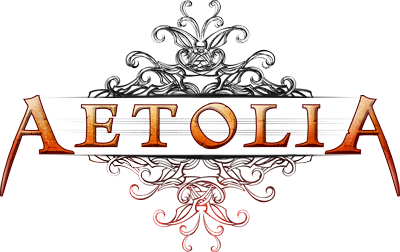9.8.4 Floristry
Flowers are a common decorative and celebratory piece throughout many cultures, and in each, the artist that makes a single beautiful flower or a collection of colorful bulbs come most to life is the Florist. The talent of Floristry allows you to create a number of floral arrangements that can be used for decoration, as gifts, or as accessories to your favorite outfit.
To become a Florist, you must visit the master Florist of Aetolia, Esine (v56972). Located in the Grand Library of Aetolia, Esine will teach you all she knows of Floristry for a fee of 65 credits. To learn Floristry from Esine, enter LEARN TALENT OF FLORISTRY FROM ESINE.
Once you have learned this Talent, you will be as skilled as any other Florist, though your creativity will be the ultimate test.
To create a floral arrangement, there are several steps you should follow.
1) Purchase a blank design pattern using DESIGN REQUEST.
2) Identify the pattern you wish to copy for the specific item you need from the Floristry shop, then DESIGN <your new pattern> COPY <pattern to be copied>. This will make a copy of the existing pattern layout on your blank pattern.
3) Customize your pattern's various requirements. DESIGN FLORISTRY will give you a list of useful commands for this and DESIGN by itself will list all other essential commands.
4) Take your design pattern to a craft guild office and DESIGN <pattern> SUBMIT it for evaluation. The mortal approvers will review your pattern according to our standards and make a pattern from it if the design is approved.
5) When the design is approved, you will be notified by message or prompt in-game. Return to the craft guild office and DESIGN <pattern> PAY FEE to gain access to your ready-to-use pattern! The craft guild charges a fee for the creation of the design.
Use DESIGN LIST to list all of the patterns you have access to. To create an item, you'd simply use CRAFT <pattern> while holding the appropriate materials.
Those who have learned the talent of Floristry may make use of a handy storage space, the Flowercache, designed specifically to store their flowers.
To store a flower, you may INFLOWER [<#>] <flower>. If you wish to store all of your flowers at once, you may use INFLOWER ALL, or INFALL. INFLOWER may be substituted by INF anywhere it is used. As you may notice, you are unable to store flowers which return to another location after a given amount of time, such as quest items, or those that are imbued with any sort of artifact power.
If you have previously stored flowers in your flowercache, you may view them using FLOWERLIST (or FLOWERL for short). By default, all of your flowers will be sorted by type. If you wish to sort them by color, you may instead use FLOWERLIST COLOR. Finding a specific color of flower is easy, as you may just use FLOWERLIST followed by a part of the flower's name. Example: FLOWERLIST ROSE will list any flowers containing 'rose' in their name. If you wish to find a specific color, FLOWERLIST COLOR GREEN, for example, will list only your green colored flowers.
You may use the following variations of the FLOWERLIST command:
FLOWERLIST [<partial name of a flower>]
FLOWERLIST COLOR [<partial name of a color>]
FLOWERLIST TYPE [<partial name of a type>]
Removing flowers from your flowercache is slightly different than removing objects from a normal cache. When you wish to remove a flower, you will need to use OUTF, followed by a part of the flower's name. Example: OUTF ROSE will remove the first rose in your flowercache. If you wanted only black roses, you could use OUTF BLACK RO. If you desire, you may put a quantity before your search; OUTF 50 TULIP will remove the first fifty tulips from your flowercache.
Dath
----
The dath is a Tsol'aan tradition where a special paste is piped onto the skin to stain it for the duration of a season. Designs for this can be found in the Siroccian Geological Society greenhouse, but is only available for senior researchers in their society. They require paste as an ingredient, which can be found in the same greenhouse.
DESIGN # WEARLOC
While the design template says WearLocation, the shortened version is what can be used to change this field of the design. Daths can be worn in the following locations: armtattoo, underwrist, necktattoo, behindear, handtattoo, and thigh. However, it is not locked to one specific location. A general examined description can leave it open to place the design in either one of those choices.
DESIGN # COLOUR
Dath can support a variety of colours, use COLOURS NAMES for a list of the available colour names to use in your design. While the design can contain more than one colour in the examined description, there can only be one main colour for the dath itself. This is the colour that will show in the wearer's general description if someone looks at them.
See also: HELP PAPERLESS CRAFTING, HELP TALENTS, HELP DESIGN GUIDELINES
